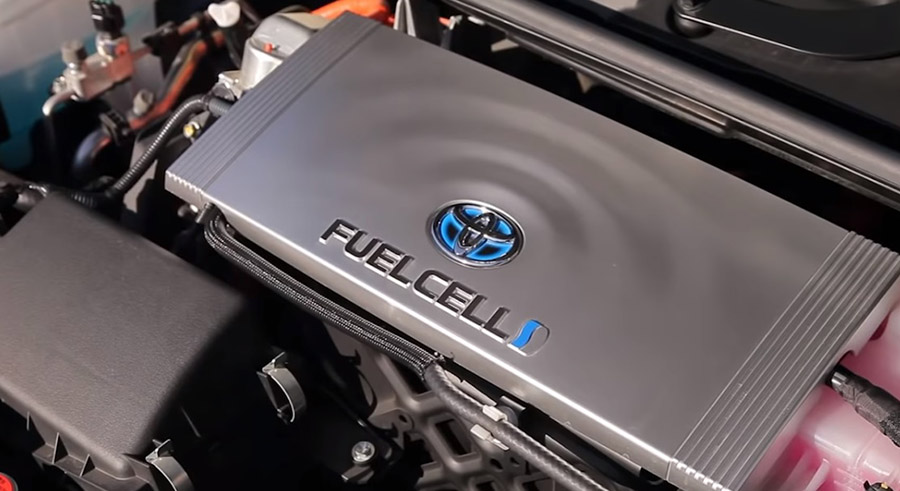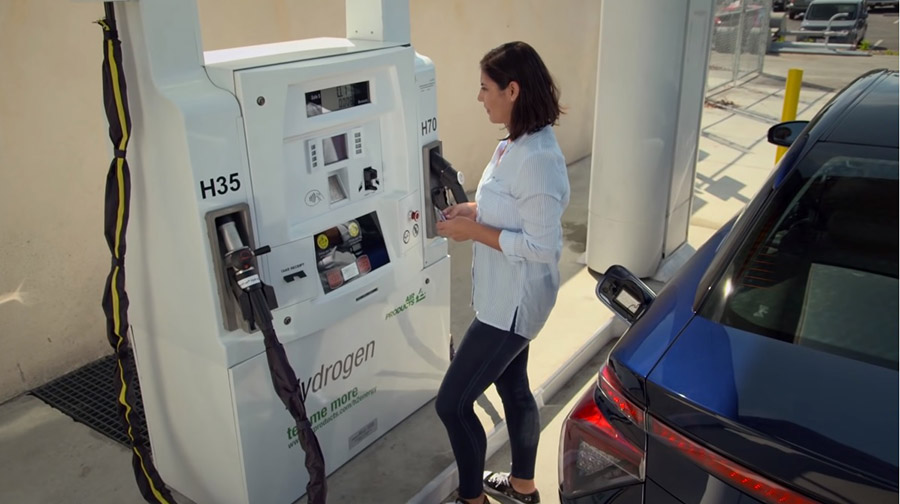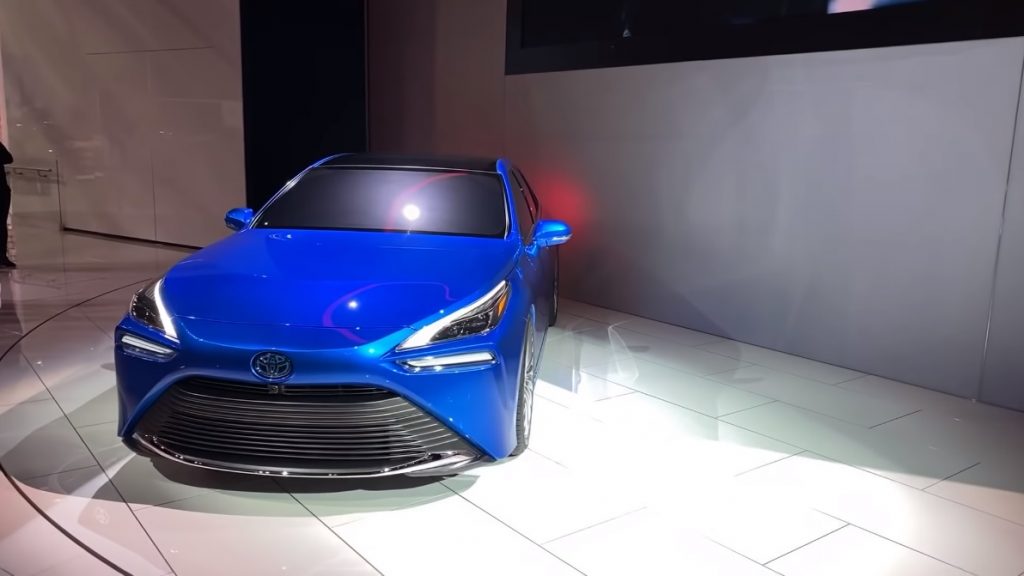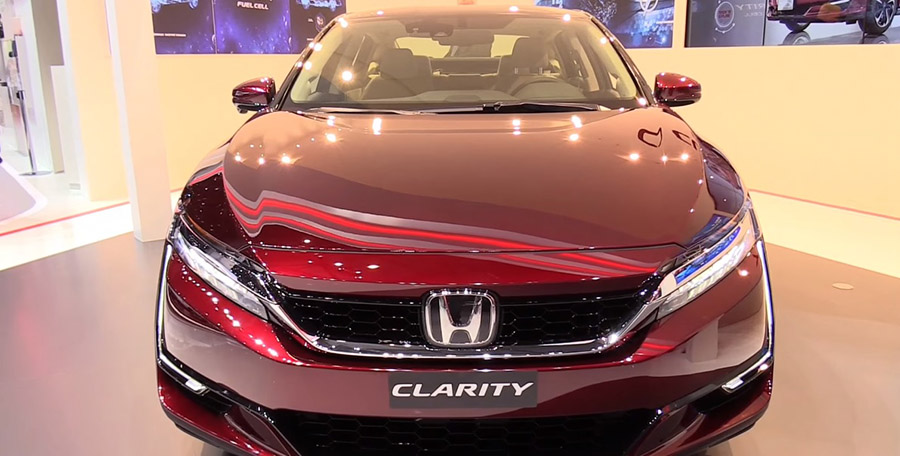At some point we have to ask ourselves, whether or not hydrogen-filled is going to become a viable fuel source? As we all know, this is a very debatable topic, but it is a very complex and intriguing endeavor.

To oversimplify this, a hydrogen fuel cell car emits zero emissions. It roughly has the same distance and filling time as a normal gas car, but hydrogen costs about twice as much. This is where it kind of gets interesting, because you will see that many hydrogen fans will say that it’s better than electric vehicles because it takes very little time to fill, it’s more reliable, and you’re not using rare earth metal batteries. Those are good points, but on the flip side, electric car vehicle fans will say that hydrogen is inefficient to produce, and it’s not widely available.
But the reason why this topic is so complex is because you have to start at zero when comparing hydrogen to other fuel sources, this means doing a comparative analysis on everything, including the cost of making the fuel cell, hydrogen production emissions and infrastructure development.
And it’s even more dynamic than that, because we have to think about what we are covering here. Are we talking about public transportation, private vehicles or even aerial vehicles? If you mix in government subsidies and research programs, this makes it nearly impossible to predict the future viability of hydrogen.
So the first problem is cost, and that’s a bit associated with production, and this kind of resorts back to how hydrogen is produced. These methods include gasification, liquid reforming and electrolysis.
Many analysts view electrolysis as a feasible way to produce hydrogen. This method uses current to split water into hydrogen and oxygen, and if it’s derived from a renewable source, then the hydrogen is considered to be renewable. However, that is just part of the problem, because storing and transporting hydrogen can be tricky, because it boils at -250 degrees Celsius at atmospheric pressure.

So producing hydrogen on site, at the fueling station makes sense in terms of availability. But this is where it gets problematic, because in order to get clean electrolysis, you require a wind or solar source.
Though, there is also a newer method which involves photoelectric chemical water splitting, this uses sunlight and semiconductors to split hydrogen and oxygen. For now it’s relatively inefficient, but there is really intriguing research in this area. So, it’s something to definitely follow.
The next challenge is actually not as problematic as some people think, and it’s developing enough infrastructure. While considering the proper geographic location and the type of vehicles to utilize, for example South Korea, with only eight hydrogen stations, is a very interesting case. Because it’s one of the first countries in which you can theoretically transfer the entire nation on hydrogen fuel. The government has very ambitious plans to build 500 stations by 2030.
Now, obviously this changes when you get to a larger country like United States, but it also shows the viability of selling hydrogen vehicles in urban locations, and then branching out into rural areas. Estimates predict that there could be over 3,000 hydrogen stations globally by 2025, which would first primarily exist in highly populated areas. And these stations would be able to support over 2 million fuel cell vehicles.
Hydrogen will probably still be a niche market for the first couple of decades, but availability will probably not be a problem, the problem is going to be the cost. And obviously, this would be very detrimental to the petrol industry, if someone figures out how to produce hydrogen at a very low cost.
Now that we have identified some of the problems associated with hydrogen fuel cells, lets get in a different direction here and discuss really good examples of hydrogen vehicles, and their benefits.

The first is the popular Toyota Mirai, which can fill up in under 5 minutes, and provide over 300 miles of range. It provides an adequate 151 horsepower and 247 pound feet of torque. Now these numbers are likely to increase, as Toyota is tweaking their newer models. The only downside here is that the car costs about $58,000, which is quite a bit when you compare it to a conventional gas car.
Toyota also developed a pretty robust and scalable fuel cell system, with a version installed in a Kenworth class 8 truck, which can pull roughly 80,000 pounds of load.

Another comparable fuel cell vehicle is the Honda Clarity, that can go 360 miles and offers around 67 miles per gallon. This car is only available as a lease, and it’s pretty pricey at $379 a month. The fuel cell powers one electric motor, and this translates to 274 horsepower and 221 pound feet of torque.

Hyundai is also in the game and offers an SUV and a crossover. Its crossover is the Nexo, and it comes in at the same price range as the Toyota Mirai. It gets an adequate 160 horsepower and 291 pound feet of torque. But it’s also worth noting that the Nexo is not all-wheel-drive and it’s only front-wheel drive. Also, customers get roughly 13,000 dollars worth of fuel.
There are a couple of other notable outliers in the hydrogen-like vehicle game, the BMW i Hydrogen Next is a fuel cell version of the X5, and BMW is planning to release a production model by 2022.
There is also the Lexus LS, which could hit markets by 2021 and both the BMW and Lexus vehicles will utilize Toyota’s fuel cell technology.
Moving on to heavy vehicles, there are quite a few concepts coming out. And this is where it gets interesting, because it might make sense for hydrogen power and heavy and long transports.

The Nicola Two is probably one of the more impressive semi with 2,000 pound feet of torque, and an estimated range of 700 miles. It’s fast refill time is roughly 20 minutes, so obviously if there is a solid enough fueling station network, then long distance commutes could work as a green alternative.

The first hydrogen fuel cell train exists in Germany, this one can go 140 kilometers an hour, and only emits steam and water. It can carry 150 seated passengers and has 1000 kilometer range. It’s filled by station located next to the railway. This could be used as a model for future hydrogen trains.
It is also worth noting that several hydrogen fuel cell buses have been made in recent years, and this is where it might make sense for this type of energy source. Because these types of vehicles are usually staying on one type of route, and they don’t require as many fueling stations.

Another interesting application of hydrogen power is on a drone. As we all know, you are lucky to get 40 minutes on battery powered drones. The 800W runs on a fuel cell, and can fly for 12 hours, the two modules make up for 4.8 kilowatts of power.
This is where fuel cell technology has a distinct advantage, because it has a way higher energy density. It comply for longer duration where battery technology starts to show its flaws, because if you add more batteries, it doesn’t necessarily mean that the aircraft can fly longer, because as we all know weight is very important in aeronautical vehicles.
And this exemplifies the complexity when you’re comparing batteries to fuel cell technology, because you also have to look at the type of vehicle you’re using these energy sources in.
So if we look at the future, we have to consider some very important developments. One being an efficient and sustainable way in producing hydrogen, the other would be developing a high energy density super capacitor which would overcome the deficiencies of battery technology. It’s hard to say which one will come first.
In conclusion, fuel cell vehicles are a good thing, but we have to figure out how to produce hydrogen in an economical and environmentally friendly way.










I’m a fan of hydrogen, and during the California fires, Tesla cars were having serious problems. Here’s why hydrogen will lose in the short term (30 yrs), at least in the USA: late stage capitalism. The economic system of western countries is based in consumption, and EV provide yet another reason for consumption before transitioning to a more efficient system. Look at VHS vs Betamax, i.e. Netscape, Amd vs Intel. The best frequently lost even though they were more efficient and provided a better product. The economic system is designed to increase consumption and increase the debt burden of the average person, and most people won’t even recognize it.